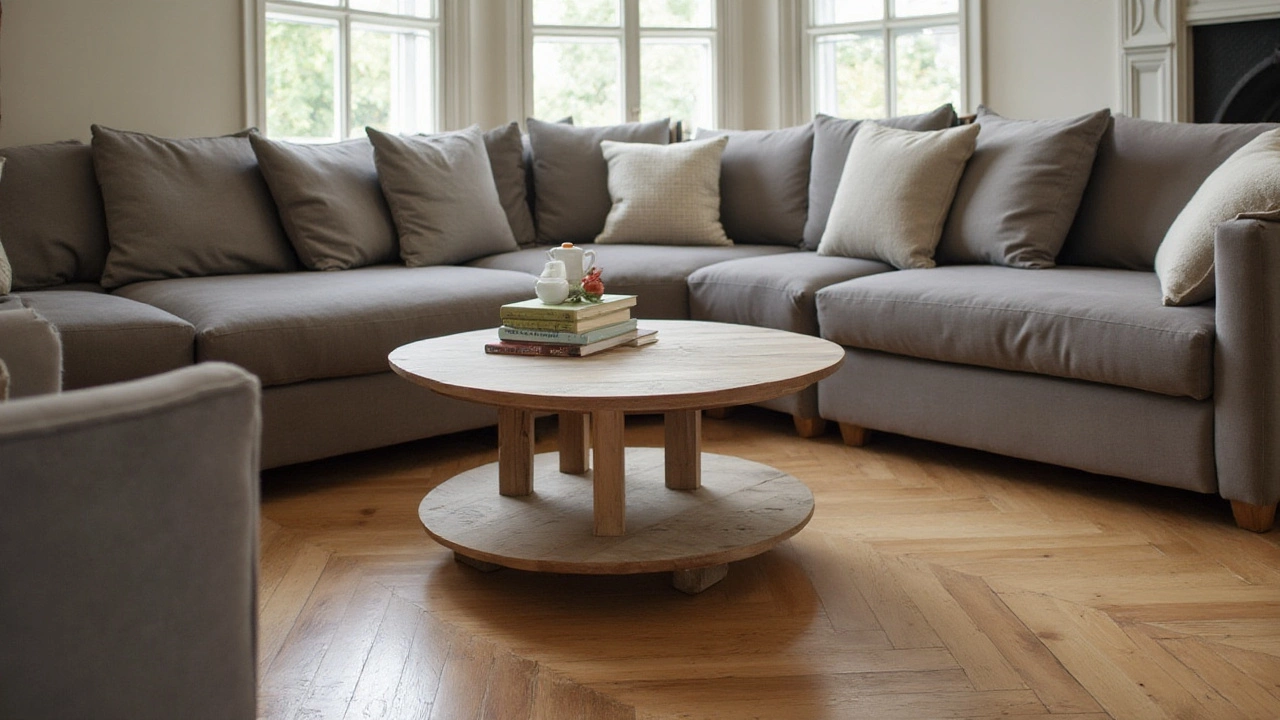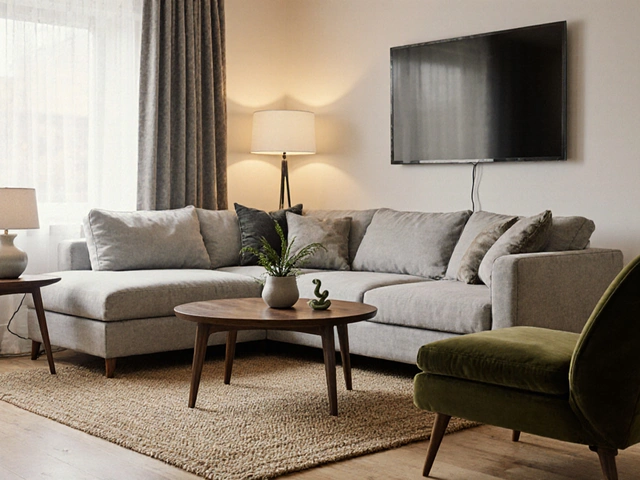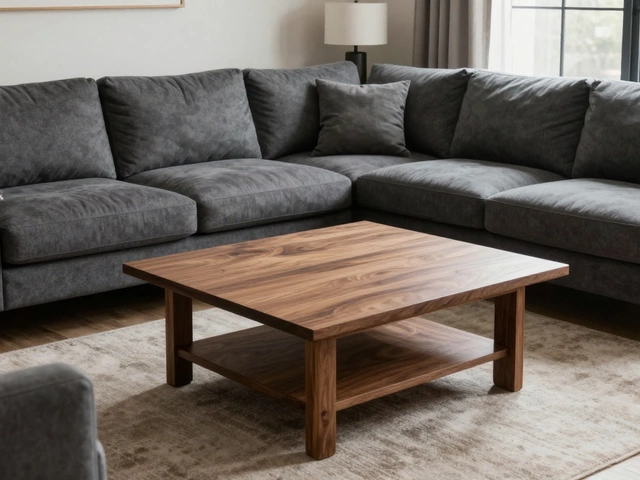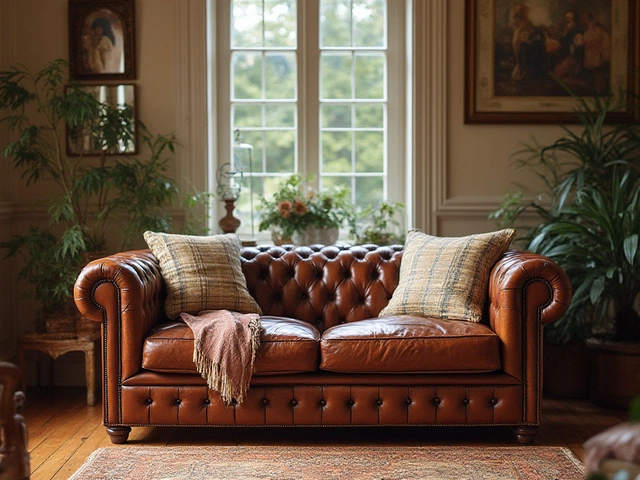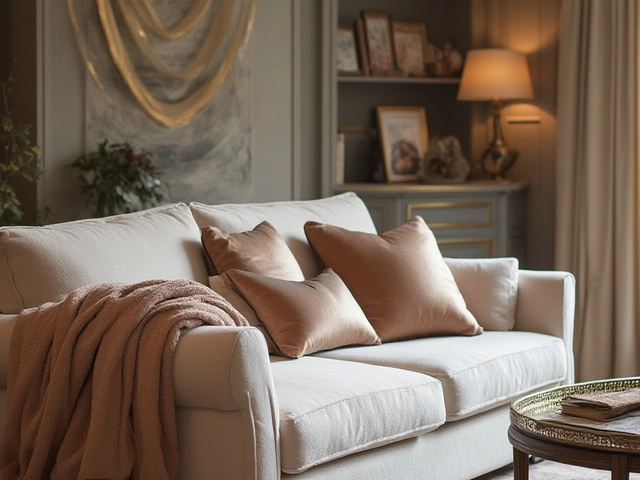When it comes to picking out furniture for your living room, the coffee table is often a major focal point. Its height can significantly impact both the look of your space and how comfortable it is for everyday use. A common debate is whether a 20-inch coffee table fits well into modern living rooms, where sleek and low-profile designs dominate. To determine if this height suits your needs, it's essential to consider various factors such as your seating configuration, the table's intended purpose, and how it complements your home decor.
Some consider a 20-inch coffee table to be on the taller side, which might either complement or clash with the rest of your furniture. While standard coffee tables typically range between 16 to 18 inches in height, opting for a taller table can introduce a unique look, especially if paired with the right setup. This article offers insights and tips to help you decide if a 20-inch coffee table is the right choice for your living space, considering both functional benefits and design coherence.
- Understanding Coffee Table Heights
- Factors Influencing Ideal Height
- Balancing Aesthetics and Functionality
- Expert Tips for Choosing the Perfect Table
Understanding Coffee Table Heights
Choosing the right coffee table height is crucial for creating a harmonious living room space. The height of a coffee table can influence the room's comfort and style, making it an important decision in interior design. Generally, the industry-standard heights for coffee tables range from 16 to 18 inches, aligning with most sofa heights for easy reach. However, a 20-inch coffee table might be seen as tall, especially when placed next to lower-profile seating. The purpose of a coffee table also dictates its ideal height. Would you want it to hold magazines, glasses, or even function as a workspace? These needs can influence whether a taller or shorter table fits.
From a design perspective, the height of your table should be within one or two inches of your seating height for functional harmony. If your sofa is higher, a 20-inch table may actually complement it beautifully, aligning with ergonomic needs while adding visual balance. To create visual harmony, designers often suggest that the coffee table's height should align with the height of your seating. This alignment creates a seamless visual flow, making spaces look professionally polished. As Emily Henderson, a well-known style expert, says,
"Your coffee table should be about two-thirds the length of your sofa and just about the same height or a bit lower."This quote offers practical advice that can help steer decisions in the right direction.
Understanding cultural variations in coffee table height preferences can also be insightful. For instance, in Japan and countries inspired by its design principles, lower tables are predominant, aligning with cultural practices that embrace floor seating. In contrast, Scandinavian designs often feature slightly taller tables, reflecting their minimalist function-focused design philosophy. Knowing these distinctions can be valuable if you wish to incorporate global influences into your home decor. There's often a balance to strike between maintaining comfortable functionality and achieving the desired design aesthetic. Keeping these ideas in mind ensures that the chosen table height not only meets practical needs but also enhances the visual appeal of your living area.
When we delve into the functionality of a coffee table, more considerations arise. If your table doubles as a dining area in a small apartment, a taller table might make dinnerware placement more convenient for dining while seated on the sofa. Conversely, if relaxation with a slight lounge during TV time is your primary use, a shorter table might be a better fit. It’s helpful to think through what daily life looks like and how your space interacts with your routines. Function often dictates form, and understanding how each element can serve your needs leads to a more satisfying living environment.
Should you consider how a coffee table will affect room dynamics? Certainly. Introducing a 20-inch element might create a strong statement piece, offering a bold look and making it a centerpiece that naturally draws the eye. Whether this works for you depends heavily on the rest of your decor's height and scale. Always factor in the rest of your furniture when considering whether to go taller with your coffee table. Comparing differences in height with your current setup or future purchases can demystify whether this is an investment that will complement and not crash your living room's symphony.
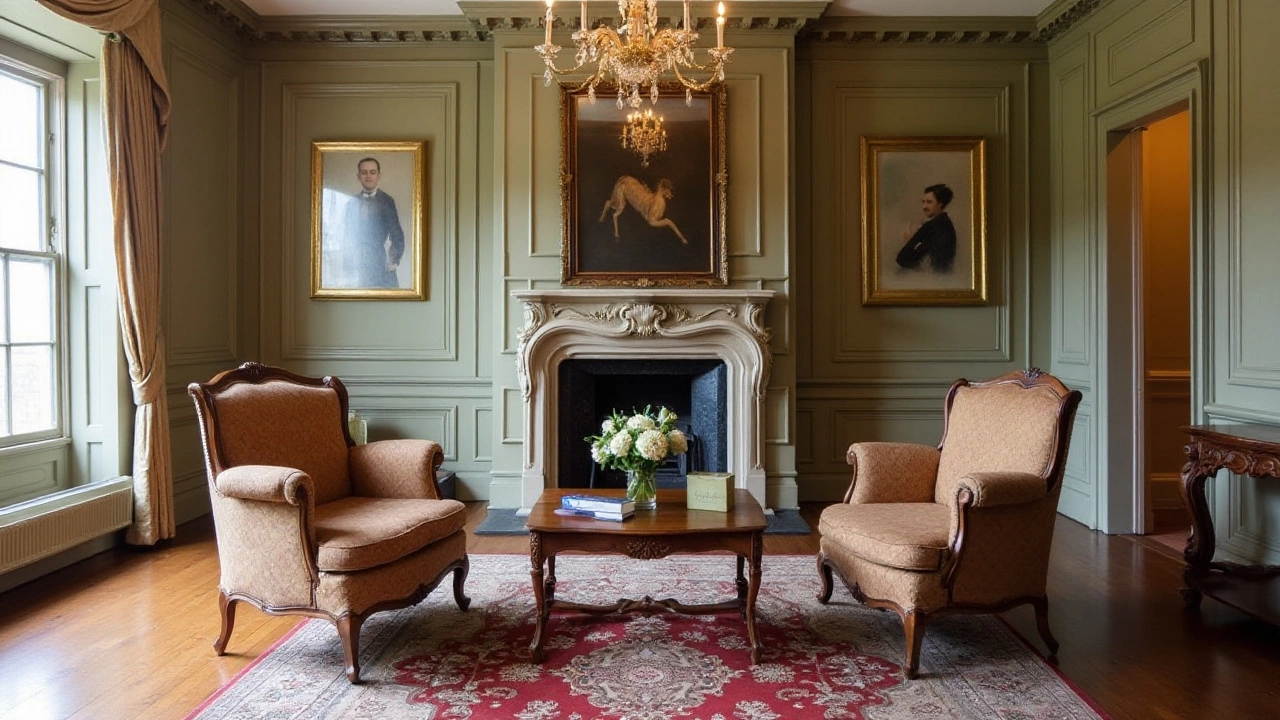
Factors Influencing Ideal Height
Finding the perfect height for a coffee table is crucial because it not only serves a functional purpose but also contributes significantly to the room's aesthetics. When deciding if 20 inches is too tall for your coffee table, the first factor to consider is the height of your seating. As a rule of thumb, the coffee table should be about the same height as the cushions on your sofa or slightly lower. This ensures that it's easy to reach for items without straining your back or being inconveniently high, a detail that might otherwise disrupt the ergonomics of your living room furniture.
Another vital factor is the way the coffee table harmonizes with the rest of the room's interior design. Does your room feature low-slung, minimalist furniture or does it embrace a more traditional style with deeper, overstuffed furniture pieces? In a space characterized by minimalist design, a lower profile often complements the airy feel. However, in a more traditional space, a 20-inch table might blend seamlessly, anchoring the room with its presence while offering ample surface area for decorative items, books, or cups of coffee.
"The height of a coffee table can alter the way you interact in a room, almost like the way a stage changes the dynamics of a play," says interior design expert Jane Smith, emphasizing the relational impact of furniture proportions.
One cannot overlook the practicalities associated with families or frequent entertaining. How high a coffee table should be can also depend on how you plan to use it. If you often host parties, a taller table might allow guests standing and seated to access snacks and drinks easily. Conversely, for a family with young children, a lower table is often preferable for safety and to accommodate little ones better. Knowing your lifestyle and habits play an essential role in this decision.
Moreover, the flow of movement in the room is another consideration. High traffic areas could benefit from a moderately-sized or slightly taller table to avoid hazards and ensure easy navigation without the need to duck and dodge around it. The interaction between furniture pieces, including armchairs, coffee tables, and side tables, impacts how inviting your home feels.
Finally, consider the dimensions of the room itself. Larger rooms might support the presence of a taller coffee table more effectively without overwhelming the space, while smaller spaces call for careful balancing to avoid the room from feeling cramped. Sometimes using a coffee table height calculator or template can offer a broader perspective on what fits best given the room's unique parameters.

Balancing Aesthetics and Functionality
The dilemma of balancing aesthetics and functionality is a common thread in interior design, especially when choosing the perfect coffee table height. A 20-inch tall coffee table may initially seem unusual if one's accustomed to the standard 16-18 inch tables. Yet, the appeal of this height lies in its ability to enhance visual interest and create a distinctive setting. It brings into question how well a piece of furniture can fit not just physically into a space, but also in a way that complements existing decor while providing utility. The added height can be particularly beneficial in settings where the presence of higher or plush seating arrangements is notable, such as with deep-seated sofas or loungers.
From a design standpoint, a 20-inch table can add an element of surprise and break the monotony of an eye-level vista often filled with lower-profile furniture. It becomes an asset in rooms where conversational interactions occur frequently, ensuring items remain within easy reach without the need to disrupt a cozy position on the sofa. The visual harmony of such a table must be choreographed with surrounding elements to avoid overstimulation or a chaotic aesthetic. In achieving this balance, one must consider spatial arrangements and thematic consistency, whether leaning towards minimalist, rustic, or modern styles.
Functionality in your living room often revolves around everyday use—be it placing your morning coffee within arm's reach or resting books and remote controls. A 20-inch table accommodates various activities, offering slightly more elevation that could make casual dining or laptop usage more comfortable than lower counterparts. It is also worth considering how this height can influence the types of decor and centerpieces you might use. Taller table surfaces can better accentuate items such as vases with taller floral arrangements, enhancing vertical space utilization and potentially directing attention towards other room elements like art or drapery.
"Design is not just what it looks like and feels like. Design is how it works." - Steve JobsThis quote speaks volumes when it comes to merging form and practicality. A coffee table, though simple in concept, plays a critical role in the daily rhythm of home life. Height, as minute a detail as it might seem, influences the sensory flow of a room and dictates the dynamics of accessibility and comfort. Room layouts with larger, more spacious environments might benefit aesthetically from a central “island” or anchor, which a taller coffee table can provide, centering the space and creating a visual landing pad.
A key factor in achieving the balance between aesthetics and functionality is the material and style of the coffee table. Wood, glass, and metal can each create different vibes, with wooden tables often adding warmth and coziness, glass lending an airy elegance, and metals contributing a modern or industrial feel. Each choice interacts uniquely with a 20-inch height, influencing not just appearance but practical usage and care considerations as well. Ultimately, whether the taller table enhances or hinders your living space comes down to how it complements your own style and the role it plays in your daily life.

Expert Tips for Choosing the Perfect Table
Choosing the ideal coffee table involves more than just measuring against your couch. It’s about creating a harmonious flow in your living space. Understanding the role of coffee table height is a critical step in establishing this balance. One of the first things to consider is how you use your table. If you often entertain guests, having a taller table like a 20-inch coffee table might serve better for those standing social situations or for placing drinks within easy reach without having to bend too much.
The height shouldn’t just match your decor style, but should cater to practical needs too. The compatibility of your table with the sofa is a significant consideration. Typically, designers suggest that the coffee table should be about one or two inches lower than the seating height of your sofas to facilitate a comfortable arm reach. However, this is not a strict rule. For instance, if your sofa is particularly low, a 20-inch table can still be a stylish and functional choice, catching the eye with its non-conformity while ensuring comfort.
A well-known designer once said, “A room should never allow the eye to settle in one place. It should smile at you and create fantasy.” Ensuring your coffee table contributes to this flow is crucial.
Additionally, think about the dynamics of your living space. A taller table can visually lift a room, making ceilings feel higher, a useful trick in snug urban apartments. Ensure that there's enough space around the table for ease of movement; a clearance of 12 to 18 inches between the table and sofas or chairs is usually recommended. If your room leans towards a minimalist design, a taller coffee table can serve as an elegant centerpiece without overcrowding the space.
Practicality often outlasts trends. When selecting your coffee table, reflect on the material and build quality. Solid wood, glass, and metal offer different advantages and style cues—a durable finish that complements the rest of your furniture can make a meaningful impact. Designers often advise matching or thoughtfully contrasting your coffee table with other furniture pieces to create a look that feels cohesive but not overly matched.
Interior design experts often encourage customization. Don’t be afraid to layer a coffee table on a large rug, or below an oversized pendant light. This usually attracts the eyes towards the center of the room, providing an inviting ambiance. Whatever your choice, ensure your coffee table helps maintain a lull in calculated design by breaking rigid conventional layouts.
